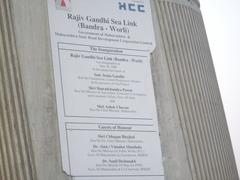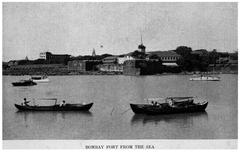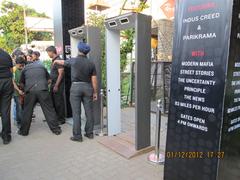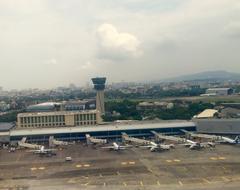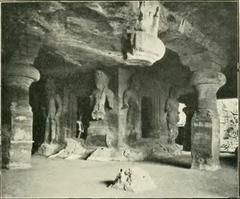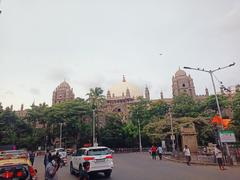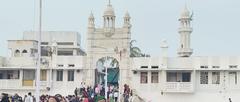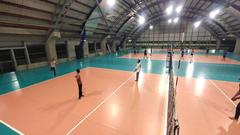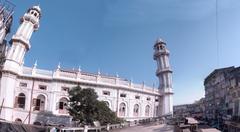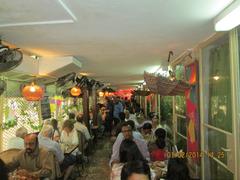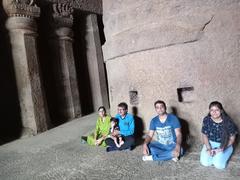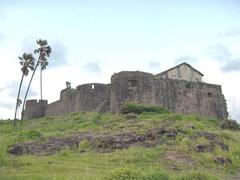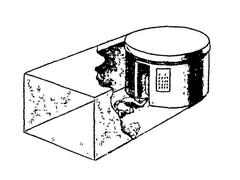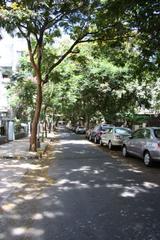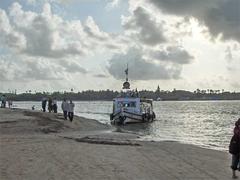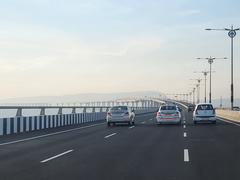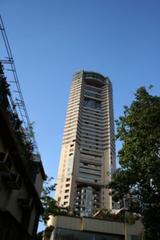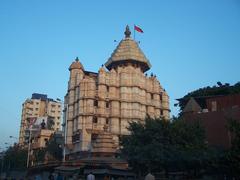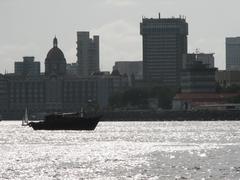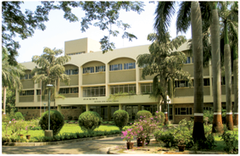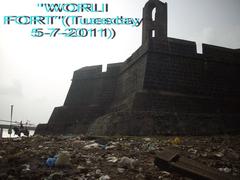St. Thomas Cathedral Mumbai: Visiting Hours, Tickets, and Historical Sites Guide
Date: 04/07/2025
Introduction
St. Thomas Cathedral Mumbai is an iconic heritage landmark, celebrated for its deep-rooted colonial history, spiritual significance, and remarkable architecture. Established in 1718 as the city’s first Anglican church, it stands as the oldest Anglican church in Mumbai, serving as a pivotal religious, historical, and cultural hub. Its journey from the late 17th-century foundation to its present-day grandeur mirrors Mumbai’s transformation, making it a must-visit destination for history enthusiasts, architecture aficionados, and spiritual seekers alike (Enroute Indian History; Pedal and Tring Tring; Mumbai Local; Outlook Traveller).
Table of Contents
- Introduction
- Early Origins and Foundation
- Architectural Evolution
- Cultural and Religious Significance
- Essential Visitor Information
- Notable Milestones and Events
- Visuals and Media
- Frequently Asked Questions (FAQ)
- Conclusion
- References
Early Origins and Foundation
The vision for St. Thomas Cathedral dates back to 1668, when Sir John Oxinden, Bombay’s first British Governor, proposed building a church within the fortified city. The foundation stone was laid by Governor Gerald Aungier in 1676, but the project faced decades of delay due to funding and administrative hurdles. It was only in 1715, under Chaplain Richard Cobbe, that construction resumed, leading to the church’s consecration on Christmas Day, 1718 (Enroute Indian History).
Architectural Evolution
Original Design and Early Modifications
The cathedral was initially built in the Neoclassical style, characterized by symmetry and understated elegance. Its early design reflected the resources and practicalities of the colonial era, resulting in a modest yet dignified structure (Enroute Indian History).
19th-Century Additions
Significant enhancements in the 19th century included the addition of a 146-foot bell tower in 1839 and the introduction of Gothic Revival elements, such as an ornate eastern wing and a fountain designed by Sir Gilbert Scott in 1864. These changes marked the cathedral’s growing prominence in Bombay’s urban landscape (Pedal and Tring Tring).
20th and 21st Century Restorations
The cathedral underwent modernization in the 20th century, including the pioneering use of concrete for the chancel roof in 1920. By the late 1900s, neglect had led to deterioration, but a major restoration in 2003 restored its former glory, earning a UNESCO Urban Heritage Award. Restoration efforts reinstated the sloping roof, revived stained glass windows, and preserved memorials and original features (Enroute Indian History; Pedal and Tring Tring).
Cultural and Religious Significance
Anglican Heritage and Diocese of Bombay
For over a century, St. Thomas Cathedral was the principal Christian landmark in Bombay, later becoming the seat of the Diocese of Bombay in 1837. The appointment of the first Bishop, Thomas Carr, marked a new era; his memorial stands beside the main altar (Pedal and Tring Tring).
Memorials and Artistic Features
The cathedral’s interiors are adorned with marble and stone memorials dedicated to British officers and parishioners, offering glimpses into colonial life. Notable features include stained glass windows by Charles Eamer Kempe and depictions of St. Thomas, the apostle believed to have brought Christianity to India (Pedal and Tring Tring).
The Cathedral as Zero Point
St. Thomas Cathedral was designated as Mumbai’s ‘Zero Point’—the reference for measuring distances along major roads. Of the original sixteen milestones commissioned in 1817, ten still exist. The adjoining area, once Churchgate, remains a prominent name in Mumbai’s geography (Enroute Indian History; Pedal and Tring Tring).
Essential Visitor Information
Visiting Hours
The cathedral is open:
- Monday to Saturday: 7:30 am – 6:00 pm
- Sunday: 8:00 am – 7:00 pm
Hours may vary during festivals or special events (TourTravelWorld; IndiaFamousFor).
Entry Fees and Tickets
Admission is free, with donations welcome for maintenance (TourTravelWorld).
Accessibility
The cathedral is wheelchair accessible, with ramps and supportive facilities for visitors with mobility challenges (TourTravelWorld).
Guided Tours
Guided tours are available upon request and can be booked through the cathedral office or via heritage tour operators. These tours offer insights into architecture, history, and memorials.
Special Events and Photography
Special services are held during festivals like Christmas and Easter, often featuring choral performances and elaborate décor. Photography is allowed, but flash should be avoided, especially during services.
Nearby Attractions and Travel Tips
The cathedral is centrally located in the Fort district, near:
- Gateway of India
- Flora Fountain
- Horniman Circle
- Chhatrapati Shivaji Maharaj Vastu Sangrahalaya (Prince of Wales Museum)
- Colaba Causeway
The site is accessible by train (Churchgate and CSMT stations), bus, taxi, or on foot. Limited parking is available; public transport is recommended (TripHobo).
Notable Milestones and Events
- 1676: Foundation stone laid by Gerald Aungier
- 1715: Foundation stone re-laid by Richard Cobbe
- 1718: Consecration on Christmas Day
- 1817: Cathedral designated as ‘Zero Point’
- 1837: Diocese of Bombay established
- 1839: Bell tower addition
- 1864: Gothic Revival enhancements
- 1920: Concrete roof installation
- 2003: Major restoration; UNESCO award
- 2016: Rededication for divine services
Visuals and Media
For a virtual experience, explore the virtual tour of St. Thomas Cathedral Mumbai.
Frequently Asked Questions (FAQ)
Q: What are the visiting hours?
A: Monday–Saturday 7:30 am–6:00 pm; Sunday 8:00 am–7:00 pm.
Q: Is there an entry fee?
A: No, entry is free.
Q: Are guided tours available?
A: Yes, by prior arrangement.
Q: Is the cathedral wheelchair accessible?
A: Yes.
Q: Can I take photographs?
A: Yes, but avoid flash and be respectful during services.
Q: How do I get there?
A: The cathedral is in Fort, Mumbai, near Churchgate and CSMT stations; use public transport for convenience.
Conclusion
St. Thomas Cathedral Mumbai is both a symbol of the city’s colonial heritage and a vibrant center of spiritual life. Its blend of Neoclassical and Gothic Revival architecture, rich memorials, and community events make it a top destination for visitors seeking to experience Mumbai’s layered history. With free entry, accessibility features, and guided tours, the cathedral is welcoming to all. Combine your visit with nearby attractions for an enriching day in the heart of Mumbai.
For more travel tips and historical guides, download the Audiala app and follow our updates on Mumbai’s heritage sites.
References
- St. Thomas Cathedral Mumbai: Visiting Hours, Tickets, History & Travel Guide, Enroute Indian History
- St. Thomas Cathedral Mumbai: 300 Years of Christmas, Pedal and Tring Tring
- Discover St. Thomas Cathedral Mumbai: Visiting Hours, Tickets & Historical Significance, Mumbai Local
- St. Thomas Cathedral Mumbai: Visiting Hours, Tickets & Architectural Highlights, Outlook Traveller
- St. Thomas Cathedral Mumbai Visiting Hours, Tickets & Visitor Guide, TripHobo
